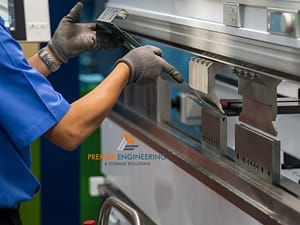The presence of asbestos in roofing materials was once commonplace due to its durability and fire-resistant properties. However, the discovery of health risks associated with asbestos fibers has necessitated careful maintenance and handling of these materials. Proper maintenance of asbestos roofs is crucial not only to extend their service life but also to prevent the release of harmful asbestos fibers, which can pose serious health risks.
Recognizing the Need for Maintenance
Identifying Signs of Wear and Damage
Asbestos roofs, like any roofing material, are subject to wear and tear over time. Signs that an asbestos roof may require maintenance or further inspection include visible surface degradation, cracking, moss or lichen growth, and water leaks inside the building. Discoloration or powdering of the roof surface may also indicate that the asbestos cement is deteriorating, potentially leading to fiber release.
Understanding the Risks
Neglecting an asbestos roof can lead to significant health and structural risks. As the roof deteriorates, asbestos fibers may become airborne and pose a severe health risk when inhaled, leading to diseases such as asbestosis, lung cancer, and mesothelioma. Structurally, a neglected roof can lead to leaks, causing water damage to the building’s interior and weakening its overall integrity.
Safe Maintenance Practices
Do’s and Don’ts of Asbestos Roof Maintenance
Do’s:
- Regularly inspect the roof for signs of wear or damage from a safe distance.
- Keep asbestos roofs clean of debris using gentle methods that do not disturb the surface.
- Engage professionals for repair or removal tasks involving asbestos materials.
Don’ts:
- Avoid pressure washing or aggressive cleaning methods that can release fibers.
- Do not drill, cut, or break asbestos roofing materials.
- Never attempt DIY repairs that involve direct contact with asbestos materials.
Preventive Measures
Implementing preventive measures can significantly reduce the need for extensive maintenance and prolong the life of an asbestos roof. Coating the roof with a specialized sealant can help lock in asbestos fibers and protect the surface from weathering. Ensuring that gutters and drainage systems are clear to prevent water accumulation can also reduce the risk of damage. Regular, non-invasive inspections can help identify potential issues early, allowing for timely interventions that minimize health risks and structural damage.
When to Seek Professional Help
The Role of Professional Asbestos Inspectors
There are critical moments when engaging with professional asbestos inspectors becomes indispensable. First and foremost, expert assessments are necessary when any disturbance to the asbestos-containing material (ACM) is anticipated, be it for maintenance, repair, or renovation purposes. Professionals are equipped with the knowledge and tools to assess the condition of asbestos roofs accurately, identifying risks that might not be visible to the untrained eye. Their expertise is crucial for determining whether the roof can be safely maintained or needs to be removed to mitigate health risks.
Choosing a Qualified Asbestos Removal Company
Selecting the right asbestos removal company is pivotal in ensuring that any work involving ACMs is conducted safely and in accordance with legal standards. Criteria for choosing a qualified company include:
- Licensing and Certification: Verify that the company holds the necessary licenses and certifications to perform asbestos removal work in your area.
- Experience and References: Look for companies with extensive experience in asbestos removal and ask for references to gauge their reliability and quality of work.
- Safety Record: Inquire about the company’s safety record and the measures they take to protect their employees and clients.
- Compliance with Regulations: Ensure that the company follows local and national regulations regarding asbestos handling, removal, and disposal.
Legal and Safety Considerations
Compliance with Local Regulations
Handling and disposing of asbestos is heavily regulated due to its health risks. It’s crucial to familiarize yourself with local regulations governing the maintenance, repair, or removal of asbestos roofs. These laws typically outline specific requirements for notification, safety measures, and disposal procedures to prevent asbestos fiber release into the environment. Adhering to these regulations is essential not only for legal compliance but also for ensuring the safety of building occupants and the broader community.
Safety Equipment and Procedures
Safety is paramount when dealing with asbestos-containing materials. For professionals undertaking maintenance or removal tasks, wearing appropriate personal protective equipment (PPE) is non-negotiable. PPE includes respirators equipped with high-efficiency particulate air (HEPA) filters, disposable coveralls, gloves, and eye protection. Furthermore, establishing containment zones and using wetting techniques to minimize dust generation are standard procedures to prevent asbestos fiber dispersion during work.
Long-term Maintenance Plan
Developing a Maintenance Schedule
Creating a proactive maintenance plan is essential for managing an asbestos roof safely over the long term. Such a plan should include regular visual inspections to identify potential issues like cracks, leaks, or signs of wear before they escalate into larger problems. Schedule these inspections at least twice a year, ideally in the spring and fall, to assess the roof’s condition after extreme weather conditions. The plan should also incorporate gentle cleaning protocols to remove debris without disturbing the asbestos material, along with immediate actions to address minor damages using safe, non-invasive methods.
Documentation and Records
Maintaining detailed records of all maintenance activities, professional inspections, and repairs is crucial when managing an asbestos roof. Documentation should include dates of inspections, the nature of any findings, actions taken, and the names of any contractors or professionals involved. Keeping receipts, work orders, and any communication related to the asbestos roof is also advisable. These records not only serve as a historical account of the roof’s condition and maintenance but are invaluable for legal compliance, potential insurance claims, and informing future property owners about the roof’s asbestos content and care.
Conclusion
Asbestos roofs, while presenting unique challenges, can be managed effectively with careful attention to regular maintenance, adherence to safety precautions, and timely professional involvement. A well-considered maintenance plan, coupled with diligent record-keeping, forms the backbone of responsible asbestos roof management. Such practices not only help in extending the lifespan of the roof but also play a pivotal role in safeguarding the health and safety of building occupants against asbestos exposure risks. Ultimately, the goal is to balance the need for preserving these roofing systems with the imperative to protect public health, requiring a thoughtful and informed approach to every aspect of asbestos roof care.










